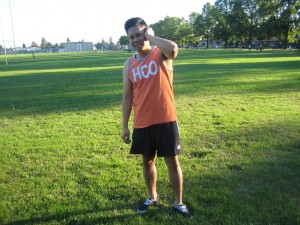An exercise headache is a type of headache in which a person suffers while performing vigorous activity or after a particular activity. These activities could be running, exercising, jogging, tennis, weightlifting and swimming. Young adults and adolescents are susceptible to exercise headaches.
[youtube url=”https://www.youtube.com/watch?v=p9ccW62j818″ width=”220″]Exercise headaches happen when the vessels of blood found around the brain becomes inflamed and stretches the nerves and result to severe shooting pain to the brain. An exercise headache is common among those who engage in weight training. Sometimes, an exercise headache can be due to some underlying condition or sustaining severe trauma due to sports.
Exercise headaches have 2 types – primary and secondary exercise headaches. Primary exercise headaches are usually harmless and not triggered by underlying medical conditions while secondary exercise headaches can be caused by conditions such as tumor or bleeding in the brain and coronary artery disease which necessitates medical help immediately. Those who are exercising at least several times a week have minimal risk for developing exercise headaches.
Symptoms
- Severe headache while performing strenuous activities or after the activity
- The pain is usually bilateral in nature
Severe headache while performing strenuous activities or after the activity
If the affected person loses consciousness, vomiting, stiffness of the neck, double vision or other disturbances, it is best to seek medical help immediately.
Management of an exercise headache
- Drink plenty of water to prevent development of exercise headache. Headache can happen due to dehydration. If a headache is about to happen while working out, drink at least 2 cups of water to minimize the pain.
- Sometimes, an exercise headache can develop because the body is not used to the exercise being performed due to being inactive for a few months. Start a slow exercise routine to build endurance and also minimize the possibility of developing an exercise headache.
- Take the prescribed anti-inflammatory medication to lessen the symptoms of the headache every four hours.
- Get plenty of sleep. Get at least 8 hours of sleep every night to minimize the development of the headache.
- Avoid using pre-workout supplements that has caffeine to prevent the development of headache.
Tips
- Take the prescribed medication before performing exercises such as propranolol or indomethacin every day at least 1-2 hours before an exercise.
- Avoid performing exercises or strenuous physical activities during humid and hot weathers.
- Perform warm-ups before any strenuous physical exercises to prevent the headaches.
- Drink plenty of water every 15 minutes to prevent the development of headaches as well as dehydration.
- Avoid high altitudes if the affected person is prone to develop headaches in those areas.
- Use medication for headaches if they are expected.
- Maintain a healthy diet and lifestyle to prevent any health issues.
- Avoid performing exercises or conditions that can result to headaches until properly treated.
- Get plenty of sleep to stay alert.
- Take a breath and relax during a work-out.
FACT CHECK
https://www.healthline.com/health/headache-after-exercise
https://www.webmd.com/migraines-headaches/triggers-exercise
https://www.mayoclinic.org/diseases-conditions/exercise-headaches/symptoms-causes/syc-20372276

